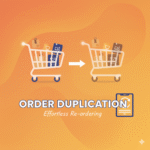When choosing between Shopify and WooCommerce, most people focus on features, pricing, and design flexibility. But two often overlooked factors security and performance can make or break your online store. After all, what’s the point of a beautiful site if it’s slow or unsafe to shop on?
In this article, I’ll break down how Shopify and WooCommerce stack up in these two key areas so you can decide which platform best fits your business.
What Security Means for an Online Store
Security in e-commerce isn’t just about SSL certificates or passwords. It’s about protecting customer data, preventing fraud, and maintaining trust. A single security breach can cost a store its reputation and customers overnight.
Key aspects include:
- SSL encryption for data safety
- PCI DSS compliance (for handling card payments)
- Malware and DDoS protection
- Regular updates and patches
- Secure payment gateways
Let’s see how Shopify and WooCommerce perform here.
Shopify: Security Out of the Box
Shopify is a fully hosted platform, which means it takes care of server management, security updates, and compliance automatically. You don’t have to worry about manual patches or security configurations.
Security highlights:
- PCI DSS compliant by default, so it safely handles credit card data.
- Free SSL certificate for every store — ensuring data encryption.
- 24/7 server monitoring and protection against DDoS attacks.
- Automatic updates, so no manual work is needed for patches.
Essentially, Shopify is hands-off when it comes to security — perfect for those who don’t want to deal with the technical side.
However, the downside is less control. You can’t modify core security settings or server configurations. If Shopify faces downtime (rare, but possible), you can only wait for them to fix it.
WooCommerce: Security Is Your Responsibility
WooCommerce runs on WordPress, which is open-source. This gives you full control, but also full responsibility for keeping things secure.
What you need to handle:
- Installing an SSL certificate (most hosts provide it for free).
- Keeping WordPress, WooCommerce, themes, and plugins up to date.
- Choosing a secure hosting provider.
- Installing security plugins (like Wordfence or Sucuri).
Pros:
- You have total flexibility — you can harden your site exactly how you want.
- Many plugins and tools help automate backups and scans.
Cons:
- More technical work. If you ignore updates, vulnerabilities can appear fast.
- Some plugins can introduce security risks if poorly coded or outdated.
So while WooCommerce can be very secure, it requires consistent maintenance — something beginners might find challenging.
Performance: Speed and Uptime Matter
A slow store is a conversion killer. Even a one-second delay can reduce conversions by up to 7%. So, performance plays a massive role in both SEO and sales.
Let’s compare how both platforms handle it.
Shopify: Optimized Hosting and Fast Loading
Shopify uses its own optimized servers and a global CDN (Content Delivery Network). This setup ensures fast load times worldwide, without you having to configure anything.
Performance advantages:
- Global CDN for faster delivery.
- Automatic image optimization and caching.
- Guaranteed uptime of 99.98%.
Because everything is built into the Shopify system, you don’t need to think about hosting or caching plugins — it’s all done for you.
The tradeoff?
You can’t tweak much. If you want to customize how your store handles caching or specific server settings, you can’t. Shopify prioritizes stability over flexibility.
WooCommerce: Speed Depends on Hosting and Setup
With WooCommerce, performance depends on your hosting provider, theme, and plugin choices.
If you pick a solid host (like SiteGround, Kinsta, or WP Engine) and optimize your setup, WooCommerce can perform just as well as Shopify — sometimes even better.
To boost performance, you’ll need:
- A reliable hosting plan (avoid cheap shared hosting).
- Caching (via plugins like WP Rocket or LiteSpeed Cache).
- A CDN (like Cloudflare).
- Optimized images and a lightweight theme.
Pros:
- Complete control over optimization.
- Can be scaled for high performance with proper setup.
Cons:
- More work to maintain consistent speed.
- Poor hosting or heavy plugins can slow it down quickly.
In short, WooCommerce’s speed depends entirely on your configuration. Shopify’s speed, however, is guaranteed out of the box.
Comparison Table: Shopify vs WooCommerce (Security & Performance)
| Feature | Shopify | WooCommerce |
|---|---|---|
| Hosting | Fully managed | Self-hosted |
| SSL | Free and automatic | Manual (usually free from host) |
| PCI Compliance | Built-in | Must be configured |
| Security Updates | Automatic | Manual |
| Performance | Optimized by Shopify | Depends on hosting |
| CDN | Included | Needs setup (e.g., Cloudflare) |
| Control | Limited | Full control |
| Maintenance | Minimal | High |
Which One Should You Choose?
If you want simplicity, strong built-in security, and consistent speed, Shopify is your best bet. It handles everything in the background so you can focus on selling.
But if you prefer control, customization, and flexibility, and don’t mind handling technical tasks like updates and security checks, WooCommerce can be incredibly powerful — especially for growing stores with specific performance needs.
Ending Words
Both Shopify and WooCommerce can be secure and fast it just depends on how much control you want versus how much responsibility you’re ready to take.
- Shopify = Peace of mind, but less freedom.
- WooCommerce = Freedom, but more work.
If you’re a beginner or solo founder who wants stability and minimal technical overhead, go with Shopify.
If you’re experienced or want to fine-tune every detail, WooCommerce gives you all the tools to build a powerful, high-performing store.


Pingback: Is Shopify Legit? The Real Truth About Shopify You Need to Know - Pratsify